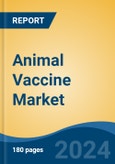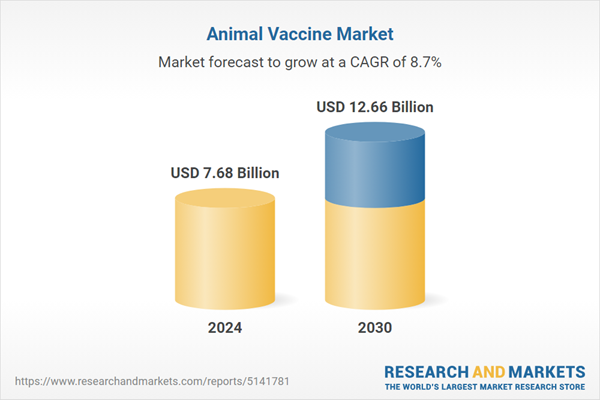Livestock is the fastest growing segment, North America is the largest regional market
Speak directly to the analyst to clarify any post sales queries you may have.
10% Free customizationThis report comes with 10% free customization, enabling you to add data that meets your specific business needs.
Key Market Drivers
The global animal vaccine market is primarily influenced by the rising incidence of zoonotic diseases and the increasing global demand for animal-derived food products. Zoonotic diseases, transmissible between animals and humans, necessitate extensive animal vaccination to mitigate public health risks. For example, according to Forbes, in December 2024, a major mpox epidemic in the Democratic Republic of the Congo and neighboring countries recorded over 16,000 confirmed cases, prompting a public health emergency declaration from the World Health Organization. This underscores the critical role of veterinary vaccines in preventing disease transmission at the human-animal interface.Key Market Challenges
The substantial cost associated with vaccine research, development, and stringent regulatory approval processes represents a significant impediment to the expansion of the Global Animal Vaccine Market. These extensive financial requirements elevate production expenses, directly impacting vaccine accessibility and affordability, particularly within developing economies where resources are often constrained. The prolonged timelines and complex regulatory pathways demand considerable capital investment, which restricts the number of new vaccines brought to market and limits the capacity for existing ones to be widely distributed at competitive prices.Key Market Trends
The Global Animal Vaccine Market is significantly influenced by the rapid advancements in next-generation vaccine technologies. This trend encompasses the development of more sophisticated solutions such as recombinant, subunit, and mRNA-based vaccines, moving beyond traditional attenuated or inactivated forms. These innovative vaccines offer enhanced efficacy, improved safety profiles, and often enable faster development cycles and more targeted protection against specific pathogens. According to the World Health Organization's (WHO) 2024 Global Vaccine Market Report, in 2023, 88 vaccine products were sold across 207 countries by 116 manufacturers, underscoring the broad market where technological advancements are being applied.Key Market Players Profiled:
- Zoetis Inc.
- Merck & Co., Inc.
- Boehringer Ingelheim International GmbH
- Biogenesis Bago SA
- Indian Immunologicals Ltd.
- Elanco Animal Health Incorporated
- Phibro Animal Health Corporation
- Neogen Corporation
- Intas Pharmaceuticals Ltd.
- Ouro Fino Saude Animal
Report Scope:
In this report, the Global Animal Vaccine Market has been segmented into the following categories:By Product:
- Attenuated Live Vaccines
- Inactivated Vaccines
- Subunit Vaccines
- DNA Vaccines
- Recombinant Vaccines
By Animal Type:
- Livestock
- Companion
- Others
By Route Of Administration:
- Subcutaneous
- Intramuscular
- Intranasal
By Distribution Channel:
- Veterinary Hospitals
- Veterinary Clinics
- Pharmacies & Drug Stores
- Others
By Region:
- North America
- Europe
- Asia-Pacific
- South America
- Middle East & Africa
Competitive Landscape
Company Profiles: Detailed analysis of the major companies present in the Global Animal Vaccine Market .Available Customizations:
With the given market data, the publisher offers customizations according to a company's specific needs. The following customization options are available for the report.Company Information
- Detailed analysis and profiling of additional market players (up to five).
This product will be delivered within 1-3 business days.
Table of Contents
Companies Mentioned
The companies profiled in this Animal Vaccine market report include:- Zoetis Inc.
- Merck & Co., Inc.
- Boehringer Ingelheim International GmbH
- Biogenesis Bago SA
- Indian Immunologicals Ltd.
- Elanco Animal Health Incorporated
- Phibro Animal Health Corporation
- Neogen Corporation
- Intas Pharmaceuticals Ltd.
- Ouro Fino Saude Animal
Table Information
| Report Attribute | Details |
|---|---|
| No. of Pages | 180 |
| Published | November 2025 |
| Forecast Period | 2024 - 2030 |
| Estimated Market Value ( USD | $ 7.68 Billion |
| Forecasted Market Value ( USD | $ 12.66 Billion |
| Compound Annual Growth Rate | 8.6% |
| Regions Covered | Global |
| No. of Companies Mentioned | 11 |









